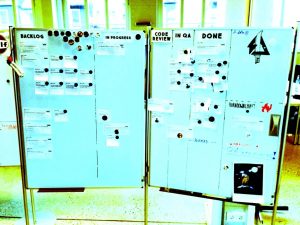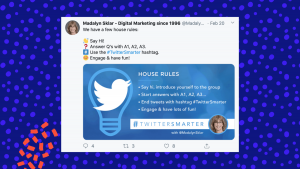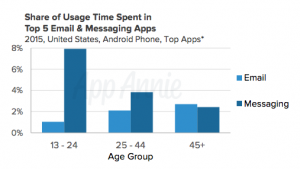You’ve probably noticed amongst your team members that everyone performs at different levels and in different capacities. That’s to be expected if you’re hiring diverse talent in order to empower your business’ wheelhouse.
But have you ever been able to pick out one or two individuals who just seem to conquer any situation you put them in?
No matter what, they just need a moment to determine what’s changed and then you’ll see them pivot with such grace, it’s almost unbelievable.
If you’ve seen it, then you’ve witnessed learning agility at its finest.
What Is Learning Agility?
How often do you find yourself in a situation where you have no idea what to do, but you’ve got the wherewithal to try and figure it out?
That’s learning agility.
Whenever you demonstrate a willingness to draw on past experiences and learn new skills to try and navigate a new situation, you’re proving that you can be agile.
Of course, it’s never fun to feel lost or confused, especially in high stakes situations, but it’s an incredibly valuable ability to be able to take the initiative to sort it out rather than give up.
The 5 Learning Agility Dimensions
You can be agile in different capacities. Not everyone is going to have the same skill set in each dimension; we all have our strengths and weaknesses.
Korn/Ferry Lominger divides learning agility into five parts:
1. Mental
Individuals who rank highly in mental agility aren’t just intellectuals. The group includes those with street smarts, too.
These are the curious, investigative types who move quickly to collect new information, identify its uses, and then apply it in practice. They know how to weed through the fluff and find the healthy root of a resource, turning it into action items to boost their productivity and work toward their goals.
2. People
This dimension refers to one’s social skills. Are they good with people? Do they have valuable leadership qualities?
People agility allows individuals to build strong relationships easily and connect on an emotional level. They’re seen as leaders and are often the first that others turn to when problems pop up. They’re great at navigating difficult situations and adapting to change.
3. Change
Those with change agility love a good challenge and tackle new experiences head on. They’re experimental and like to use different perspectives and methods to problem solve. Often seen as go-getters, there’s little that will stand in their way when hunting for a solution.
With change agility, there’s no fear of failure, only the excitement to learn something new.
4. Results
Results agility characteristics are pretty akin to change agility ones, but there’s one distinct difference. While people who rank high for change agility believe in getting back on the horse, those with results agility aim to never fall off in the first place.
The perfectionist twin of change agility, these individuals are just as passionate about new experiences, but have a second drive that pushes them to get the best results possible every time.
Instead of trial and error, it’s trial and nailed it.
5. Self-Awareness
Self-awareness is the ability to identify and understand your own strengths and weaknesses and is actually incredibly important to one’s career success. Those who are aware of themselves typically perform better than others because they can self-assess and adapt accordingly.
Their lack of blindspots makes them invaluable in work settings because they carry an objective view of situations and can offer a (mostly) unbiased perspective.
Being aware of the five dimensions can allow managers and supervisors to better allocate resources and assign roles accurately by allowing team members to be their most productive and efficient based off of their style of learning agility profile.
The 7 Learning Agility Profiles
There are seven profiles created to describe people with high learning agility and each one has a different combination of strengths, agility dimensions, and developmental needs.
1. Problem Solvers
The most frequently occurring profile, Problem Solvers take a new experience or difficult problem and work to resolve it with a careful attention to detail and an enviable drive.
They can work independently, but you’ll likely observe them looking for others to help contribute their skills toward their end goal. They’ll use every tool available to them to get the job done.
2. Thought Leaders
These are your team members who ask and answer the hard questions, working to get the truth by any means. They believe in progress, insight, and knowledge.
Following the stereotypical scholarly role, they prefer to be behind the scenes rather than on the front lines.
3. Trailblazers
Speaking of front lines, Trailblazers love going into “no-man’s land” and being the first to plant their flags in new thought territory. Innovative and confident, they are determined to get where they’re going, no matter what.
4. Champions
These are the team members who have no trouble taking on conflict and confusion with a grin on their face and transforming wrong to right with style. They know how to uplift their team and make everyone feel included in their success.
5. Pillars
Creative thinkers, those who follow under this profile, may not necessarily feel the need to reinvent the wheel, but they’ll have no problem figuring out how to make it spin faster.
They believe that anything can be improved and will develop some incredibly complex and impressive solutions to prove it. They’re inclusive, insightful, and incredibly focused.
6. Diplomats
These are the individuals you turn to when you need a conversation to run smoothly. Their social skills are perfect for navigating any sort of exchange, as they can adjust their style to match the situation with ease.
7. Energizers
Energizers are your real go-getters who know that with hard work and the right friends, you can achieve anything. They aim to please and are usually known as the ones you go to in order to get shit done and get it done right.
The Learning Agility Matrix
Understanding the mechanics of learning agility is only the beginning of leveraging this unique skill set. Identifying where there’s a demand for learning agility within your company, and even your industry, is important.
The learning agility matrix is designed to help you identify that demand, measure and identify agility in new and existing employees, and discover learning preferences.
There are four categories in the matrix:
- Average Learners: Great for roles with straightforward tasks and a consistent routine. (e.g., data entry)
- Enthusiastic Learners: Best suited to roles that require high levels of behavioral skills and creative thinking. (e.g., writing)
- Latent Learners: With above-average intelligence, these individuals thrive in complex work environments that are detail-oriented. (e.g., accounting)
- High Potential Learners: Great for roles that require problem-solving, interpersonal, and decision-making skills. Perfect for high-stakes positions. (e.g., leadership roles)
By taking stock of capabilities, skills, and developmental needs, you can create the dream team where every member is exactly where they’re going to be the most engaged, efficient, and satisfied.
Why Learning Agility Matters in Management
The qualities that make a good leader are often debated and it’s hard to create an objective list of perfect characteristics. But, compared to most candidates, agile learners are probably your best bets of making great managers.
Having managers that possess learning agility means that you’ll have leaders who can acquire new skills, guide their reports well, and adapt to any change that may come their way.
Strong, adaptable leaders are essential to have, considering 88 percent of workers turn to their peers for insight and information. For those who get overwhelmed by change, being able to turn to an agile leader is critical.
Assessing for Learning Agility: 15 Indicators to Look For
We’ve established that agile learners are a great valuable asset to any organization, but how do you clue into who possesses learning agility and who doesn’t?
It’s important to note that measuring one’s learning agility relies on two factors:
- Learning ability: One’s ability to learn new information and apply it to different situations by identifying patterns and making connections. It’s determined by their fluid intelligence and measured with reasoning tests.
- Learning orientation: One’s behavioral attributes, like inquisitiveness, drive, and open-mindedness, that allow them to learn quickly and retain information effectively. It can be measured through practical tests.
With those factors in mind, there are several different indicators of learning agility that you can keep an eye out for. By analyzing work performance and utilizing 360 degree feedback, you can start identifying certain predictors, like:
1. Strong Problem-Solving Skills
These are the team members who don’t give up when they’re challenged a little. When they see a problem, they’ll try to resolve it from every angle possible, and usually nail it quickly.
2. Conflict Management
Disagreements and difference in perspectives won’t ruffle their feathers. They rock at compromise and finding the middle ground, pleasing both sides while making sure the best result is going to be accomplished.
3. Good Character Judgement
They can get a good read of a person fairly quickly and can manage the appropriate type of relationship necessary in order to have things run smoothly.
4. Fast Learner
Whether they’re a visual, auditory, or kinesthetic learners, it doesn’t take them long to get it down. More often than not, they’ll figure it out for themselves with minimal guidance. But they’re not afraid to speak up and ask questions when necessary.
5. Active Listener
When you’re speaking to them, you can tell they’re engaged and actually listening to you. Active listeners are present in their conversations and contribute to it.
6. Independent Thinker
You don’t have to hold this individual’s hand every step of the way. They have their own ideas and processes, though that doesn’t mean they’re opposed to your perspective either. They’re capable of taking the best parts of all insight and combining them to get the best result.
7. Team Player
Even though they know how to work independently, they function well in team settings as well. Not only do they play well with others because of their sense of empathy, they can also understand and delegate the several processes and tasks that make up a team project.
8. Interested in Personal Development
Look for individuals who pursue personal learning outside of assigned assignments and reading. They’ve demonstrated interest in actively developing both their personal and professional lives.
9. Perceptive and Patient
They take stock of everything in their environment and can read a room well. Very little slips past them and they don’t mind waiting for the right moment to act, rather than rushing for a quick win or for attention. Patience is a virtue, and they’ve perfected it.
10. Self-Aware
Yes, this is technically one of the five dimensions, but it’s also one of the most easily recognizable traits of someone who has learning agility. When prompted, they can identify their own strengths and weaknesses and take stock of their accomplishments and where they can grow.
Whether they’re candid or shy about it, they know who they are and what they contribute.
11. Empathetic
This isn’t to say that they’re everyone’s best friend, but they do have a unique ability to be able to strike up a conversation with anyone. They’re a natural socializer and can make any of their peers feel comfortable.
12. Thinks Outside The Box
They can work in a structured routine, but when they see other opportunities or gain new insight, they’re not afraid to color outside the lines. They bring a fresh perspective to the projects they work on and are known to be rather creative.
13. Works Around Ambiguity
These individuals can sort things out for themselves most of the time. If given vague details or unclear instruction, they know how to take the initiative to find what they need to get the job done properly. Contradictions and paradoxes can slow them down, but it will never stop them.
14. Demonstrates Professionalism
You know you can depend on them to uphold the company values and beliefs. This doesn’t mean that they’re rigid or impersonal, but they know where the line is and are careful not to cross it. They believe in what your company stands for and work to uphold it.
15. Respected by Peers
Most of the time, agile learners are often the first that a confused or distressed employee will go to for either direction or just an open ear. Look for the team members that have built a reputation for being open and dependable, then figure out why.
Learning agility is what sets the bar for high-performing employees and leaders. It’s not hyperbolic to say that everyone would love to have an adaptable, attentive, agile member on their team to help elevate the organization.
Pay close attention to your existing employees and any potential hires who demonstrate learning agility. Put them in the right roles and you’ll see them thrive and your business will flourish.
Business & Finance Articles on Business 2 Community
(82)






